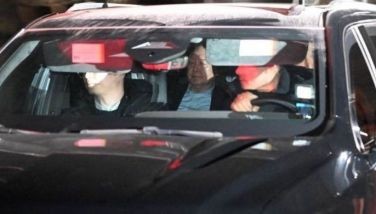Missing jet: Piracy would require special skills
To steal Malaysian Airlines Flight 370 out of midair would require a pilot who knew how to elude detection by both civilian and military radar. It would take a runway at least a mile long to land the wide-body jet, possibly in the dark, and a hangar big enough to hide it. All without being seen.
Improbable but not impossible, experts say.
With the search for the missing airliner entering its eighth day, scenarios involving piracy or hijacking are increasingly being talked about as possible explanations for the disappearance of the Boeing 777 with 239 people on board.
Authorities say they're not ruling out other theories, which include a catastrophic structural failure causing the plane to break up, engine failure, or pilot suicide. But a U.S. official gave an intriguing twist to the story Friday by saying that investigators are considering whether the plane's disappearance was due to "an act of piracy" and whether the big jet might have landed somewhere without being detected.
A takeover of the plane seemed to be ruled out a few days ago, when officials discounted any link between terrorism and two passengers who were traveling on fake passports. The piracy theory, however, gained new life when it was reported that the plane's transponders had been turned off, making it more stealthy; and that signals from the plane indicated that it kept flying for several hours after the last radio contact, possibly turning west toward the Indian Ocean.
Scott Shankland, an American Airlines pilot who spent several years as a co-pilot on Boeing 777s, said a captain would know how to disable radios and the plane's other tracking systems. But a hijacker, even one trained to fly a plane, "would probably be hunting and pecking quite a while — 'Do I pull this switch? Do I pull that?' You could disable a great deal" of the tracking equipment, "but possibly not all of it."
Some of the plane's data is transmitted automatically from equipment not located in the cockpit, making it even harder to avoid leaving electronic bread crumbs, he said.
John Hansman, an aeronautics professor at MIT who is familiar with the Boeing 777, said it would be possible for an intruder to turn off the transponders, but knowing how to shut down other systems in a bid to be stealthy would be more difficult. Even if 9/11-style hijackers got that far, he said, they would be challenged to keep flying, make a successful landing, and hide the plane.
"If it was a hijacking, it was probably a hijacking gone bad," he said.
Instead, Hansman thinks that there could have been a cascading series of malfunctions or a fire that shut down key systems on the plane and incapacitated the pilots. He compared it to the 1999 crash in South Dakota of a Learjet carrying pro golfer Payne Stewart.
Air traffic controllers couldn't contact the crew shortly after the Learjet took off from Florida; pilots in other planes saw no movement in the cockpit; and eventually the jet ran out of fuel. The National Transportation Safety Board ruled that the crash probably was caused by the pilots passing out for lack of oxygen after a loss of cabin pressure.
Without any wreckage from Malaysia Airlines Flight 370, it's hard to dismiss any theory. A week after the plane left Kuala Lumpur for Beijing, it remains a mystery how a jet with a good safety record and flying in clear weather could just disappear without even a distress call. And without being spotted by radar.
If it was a hijacking, "they would have to be somebody who has detailed knowledge of the plane," said Alan Diehl, a former NTSB crash investigator. "Could they get down below the radar and make a beeline to an abandoned airstrip somewhere? I suppose the short answer is yes. Even today, satellites don't cover every square kilometer of the Earth."
- Latest
- Trending
































